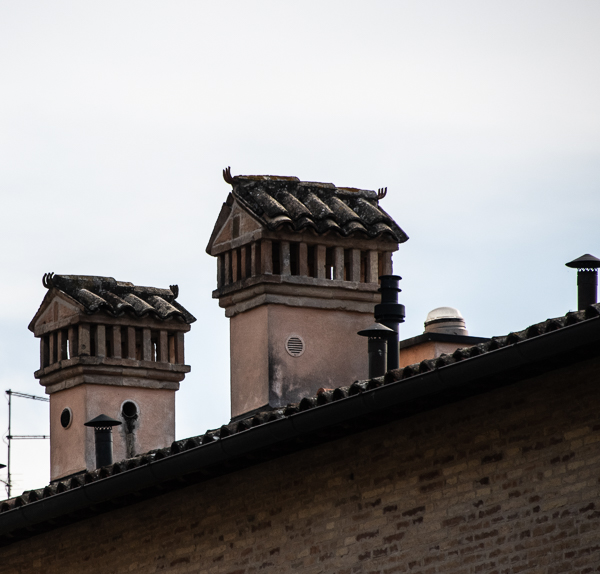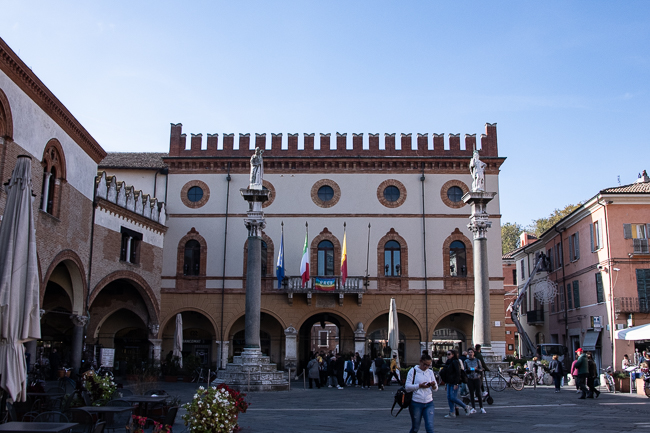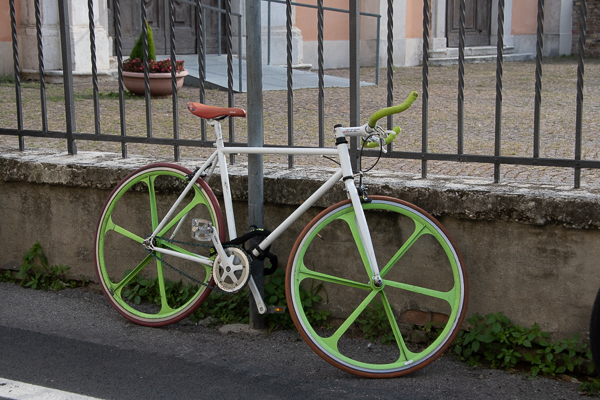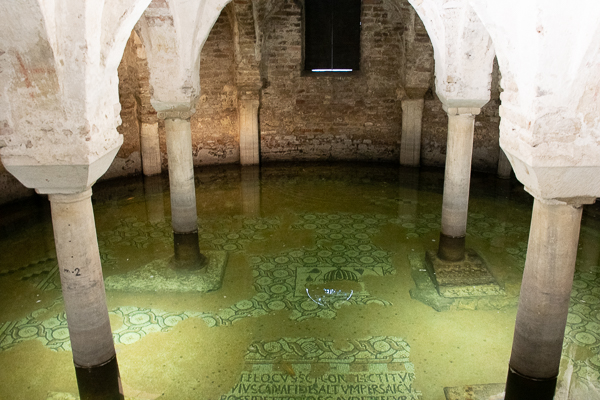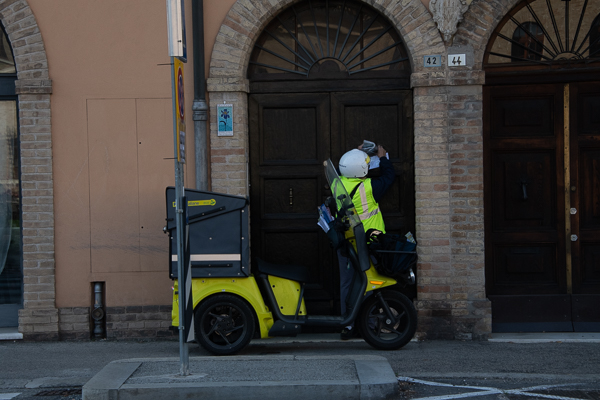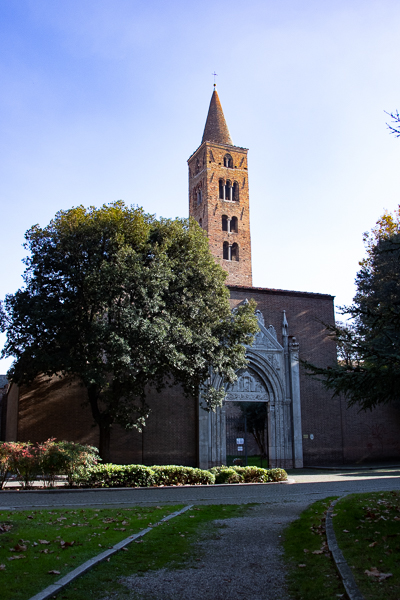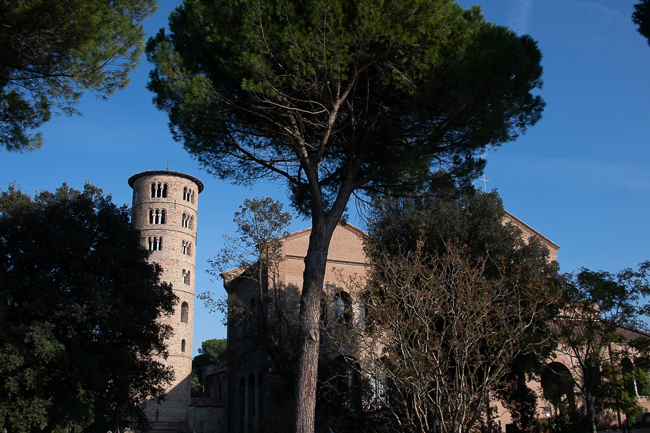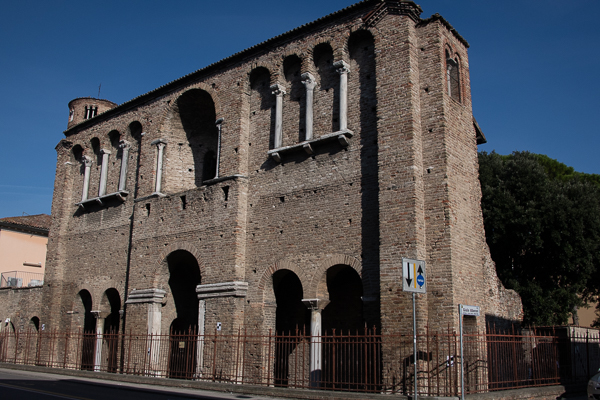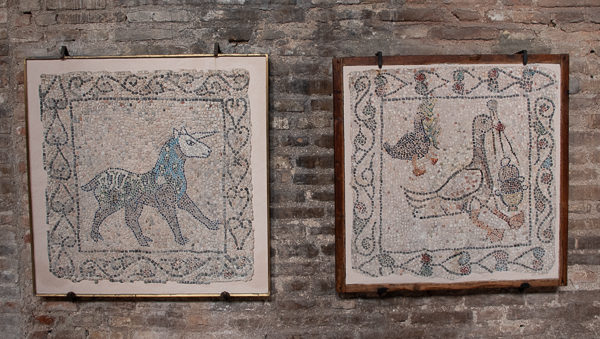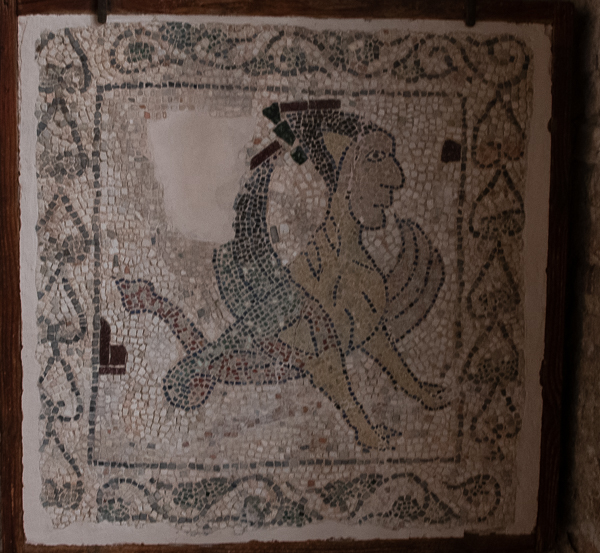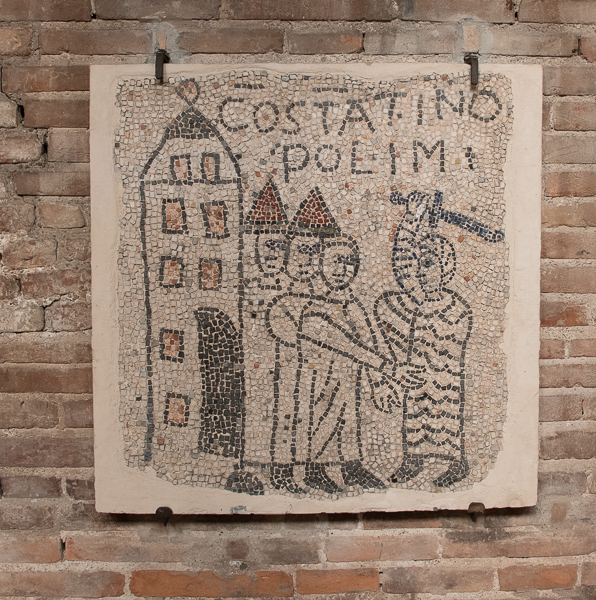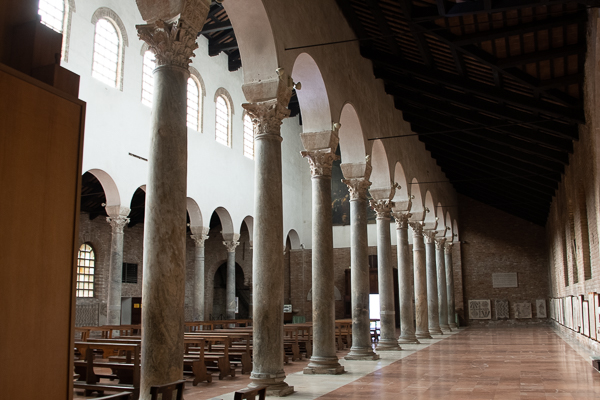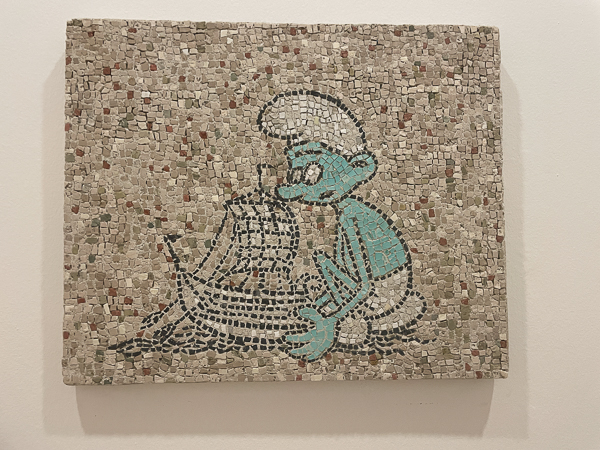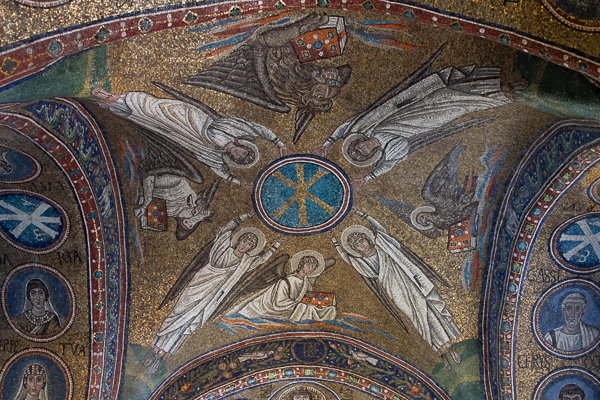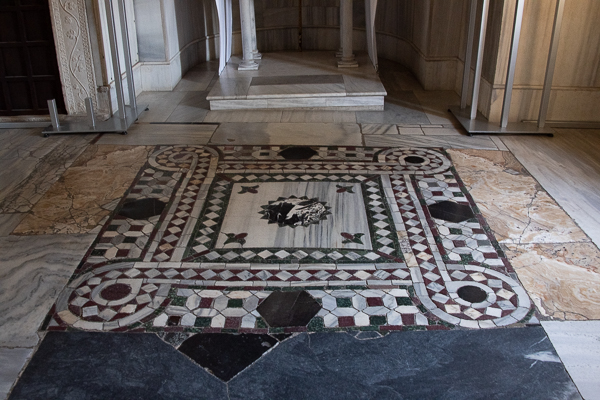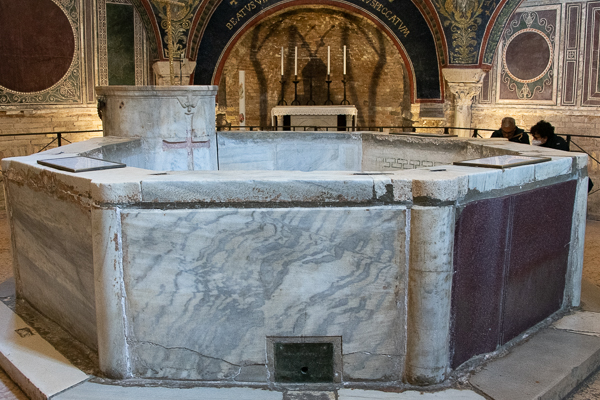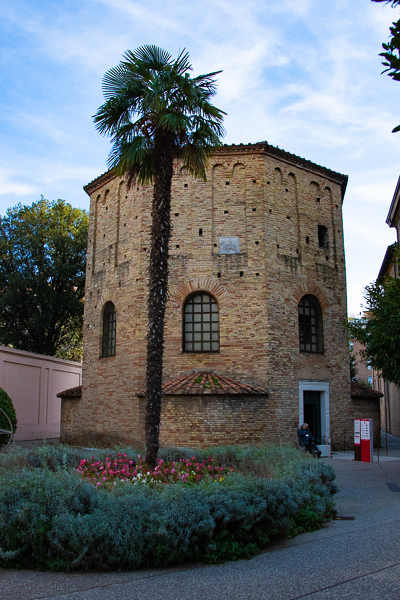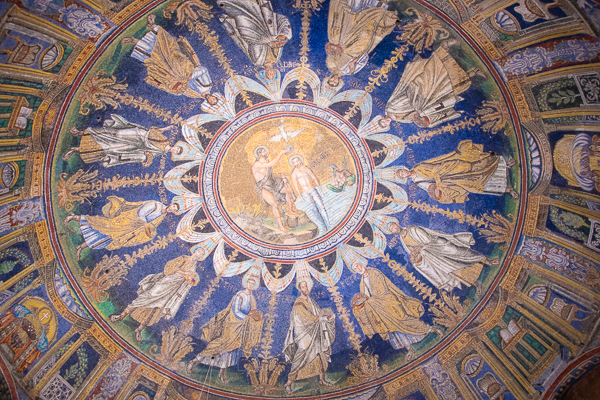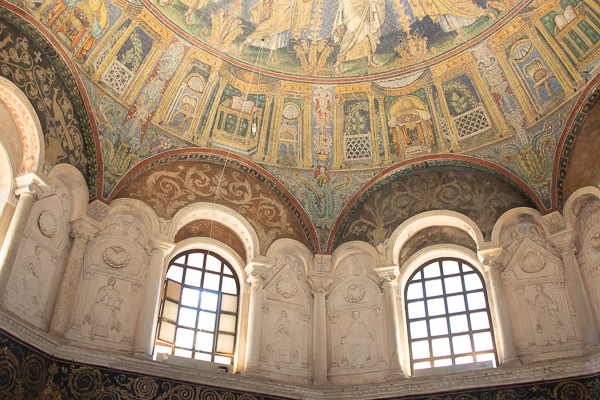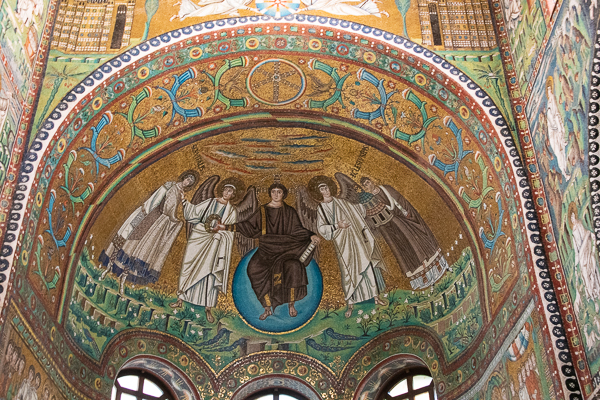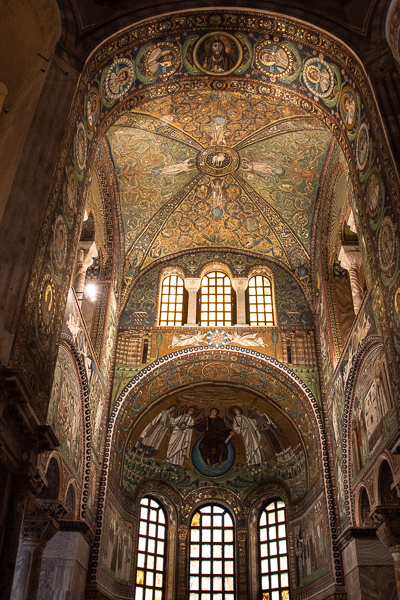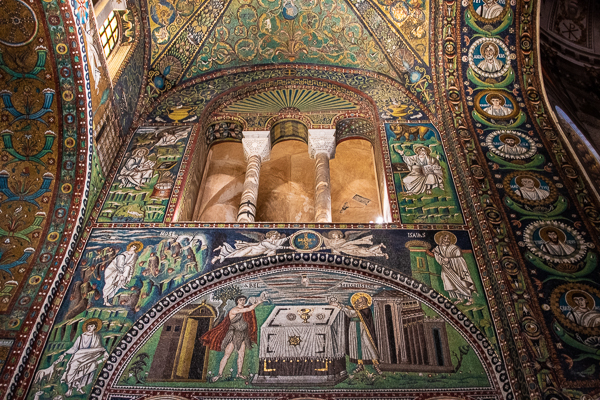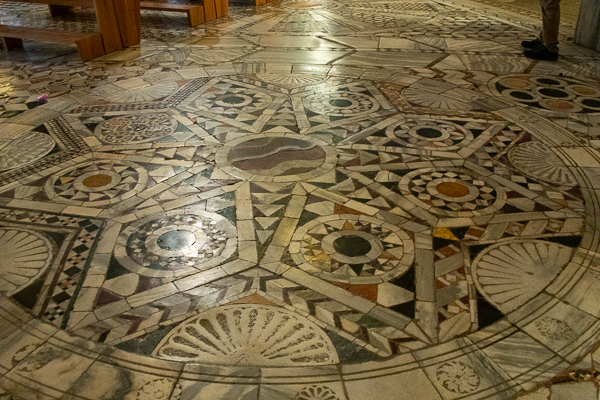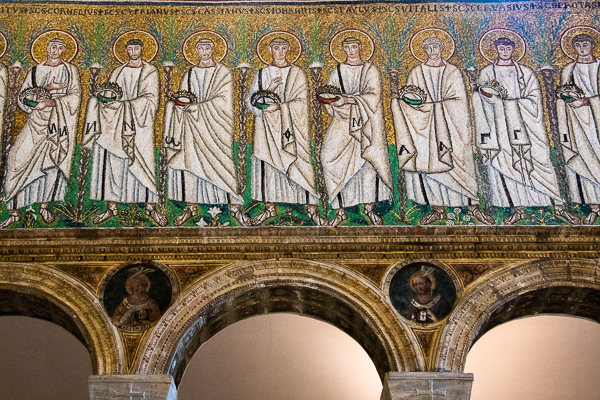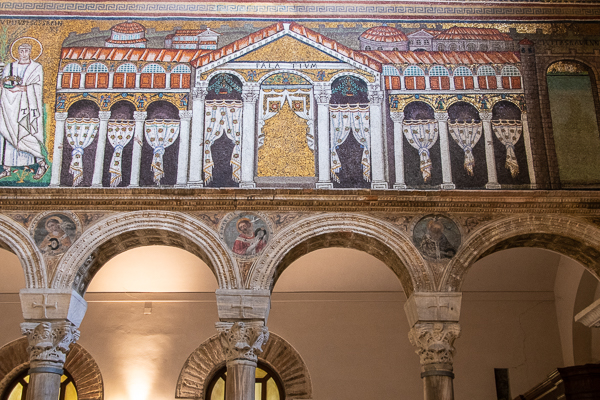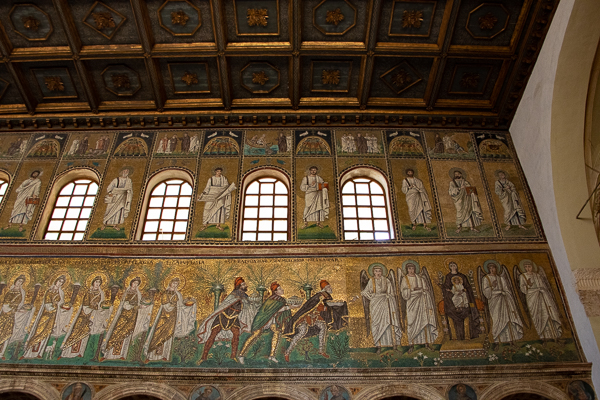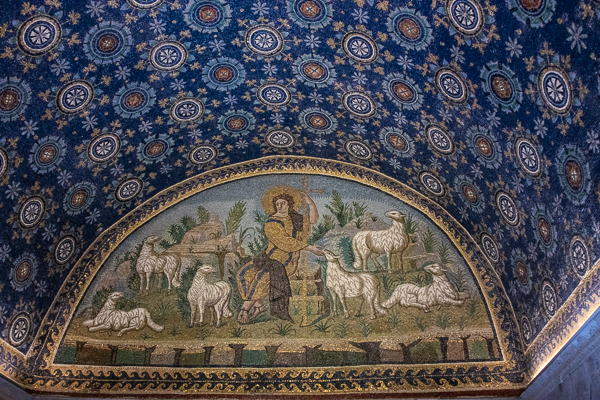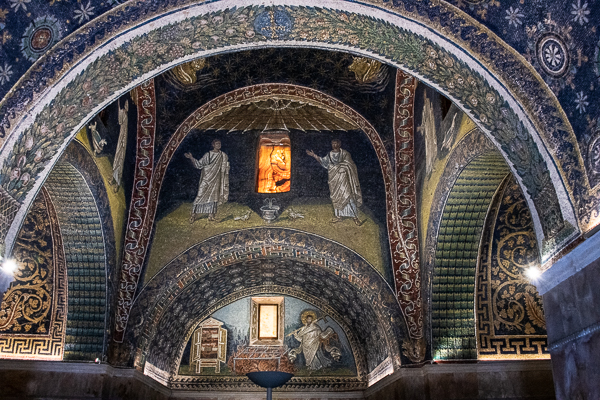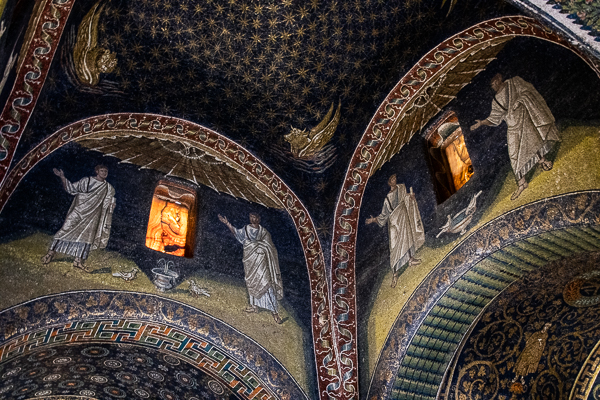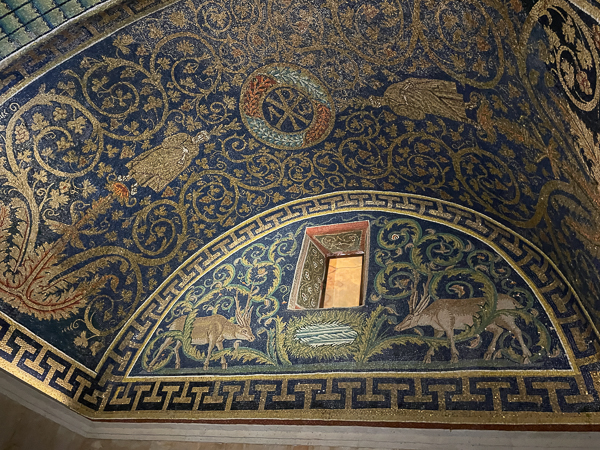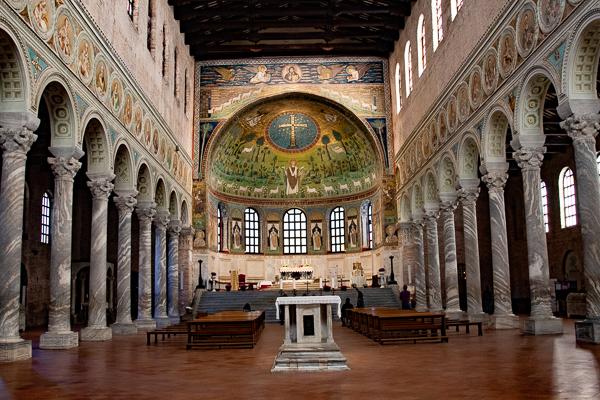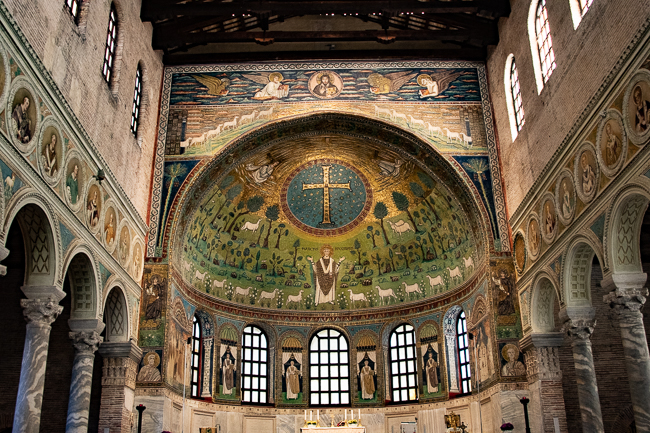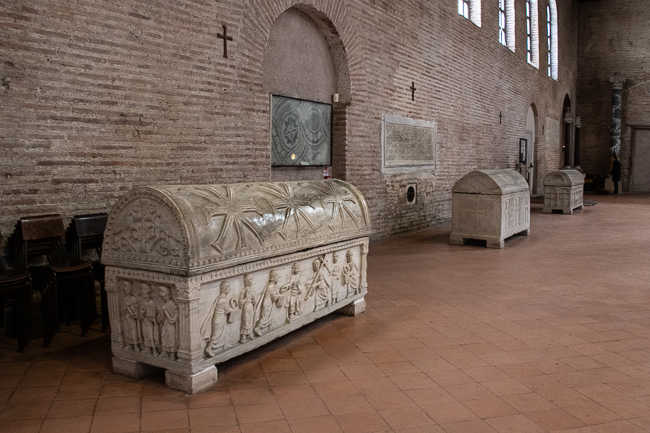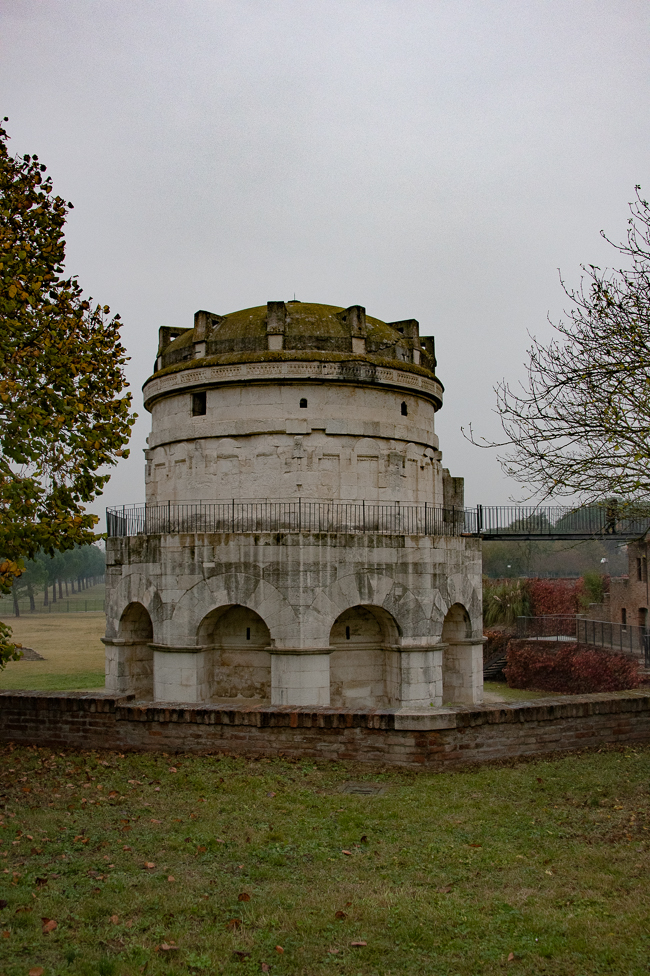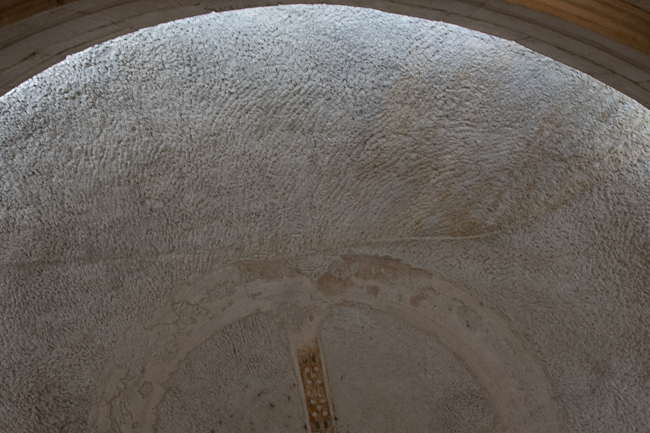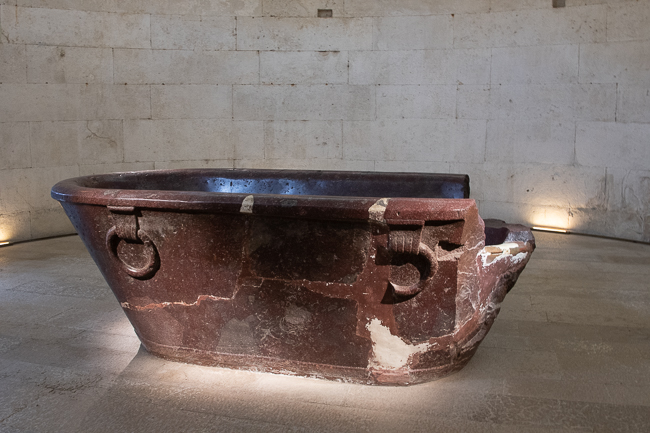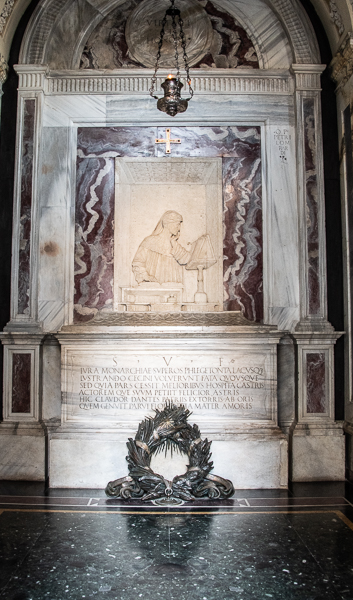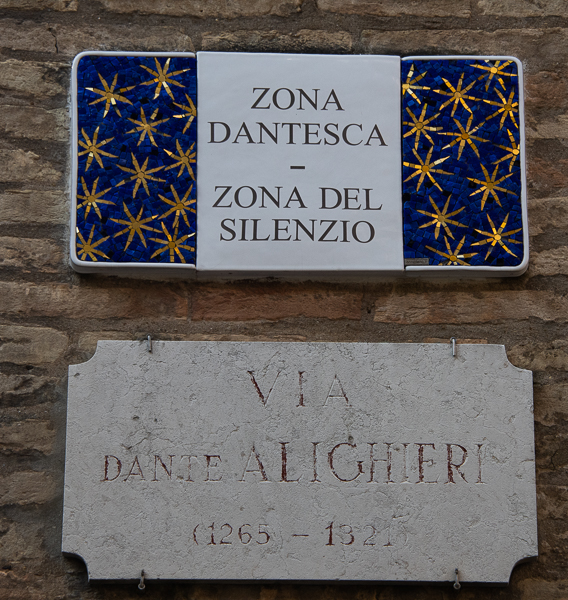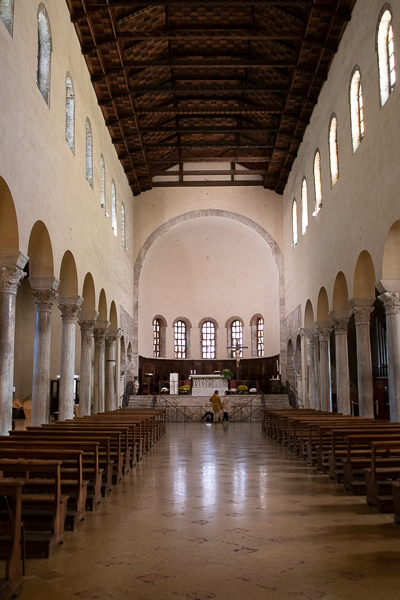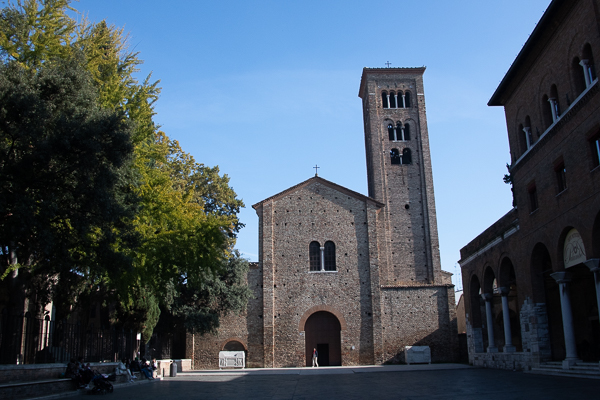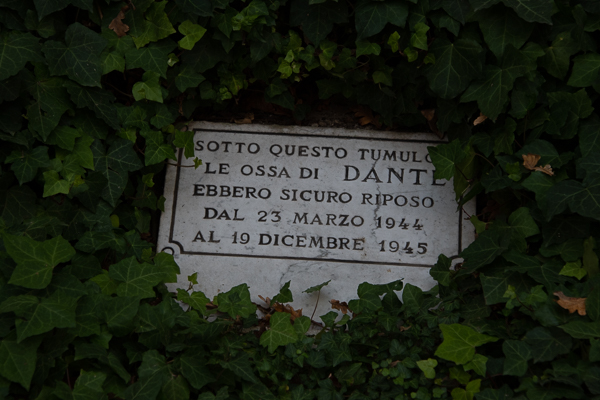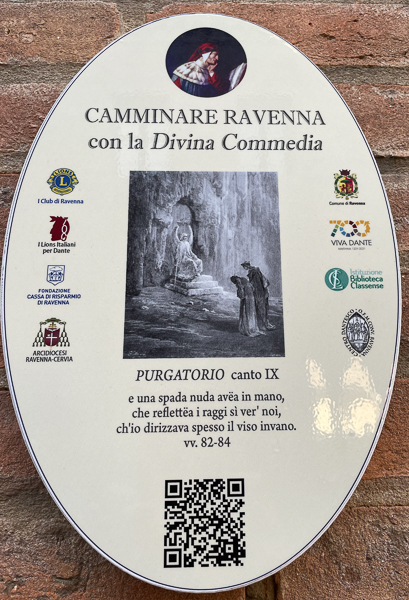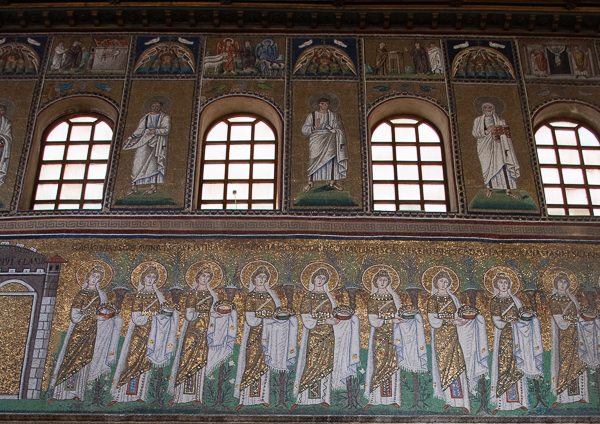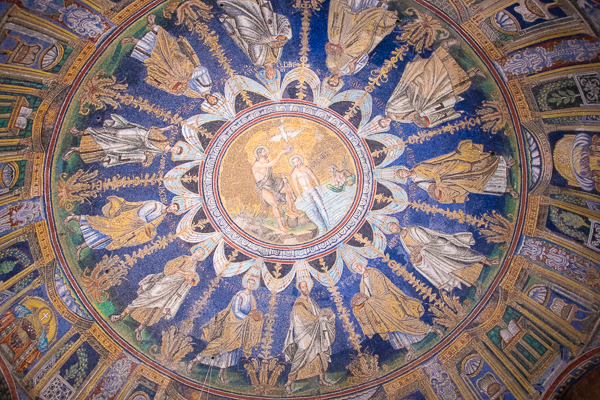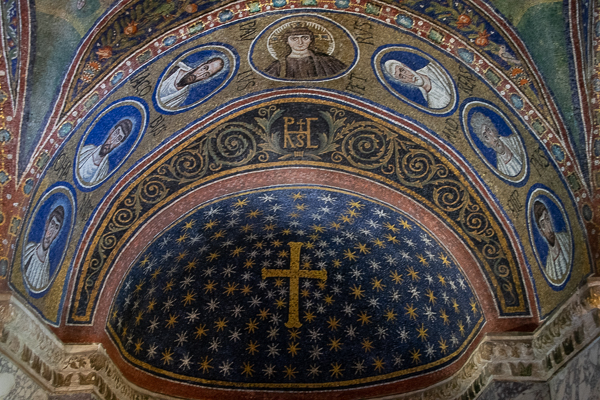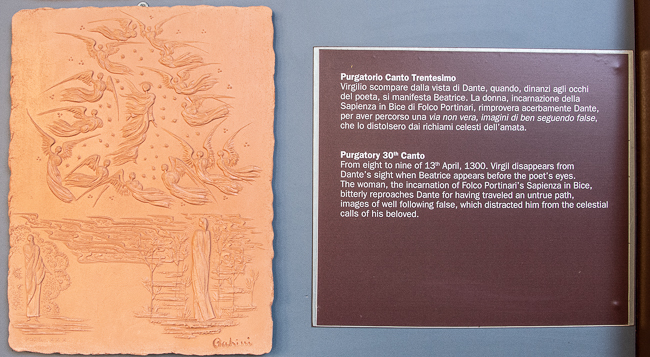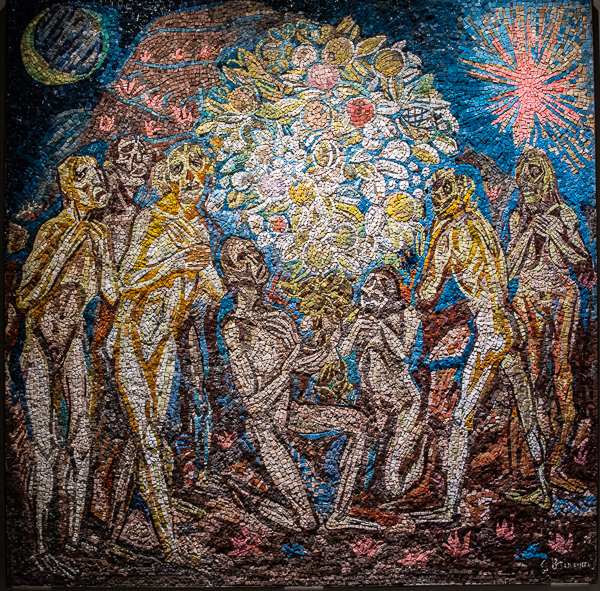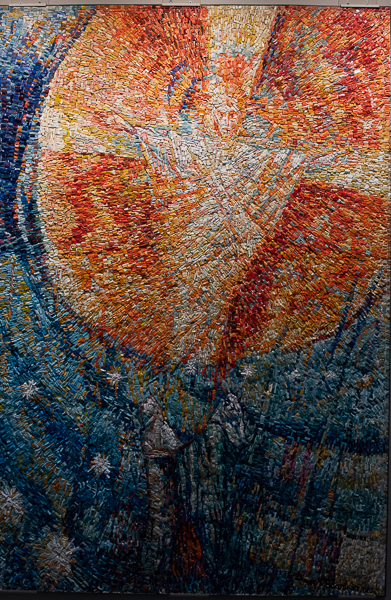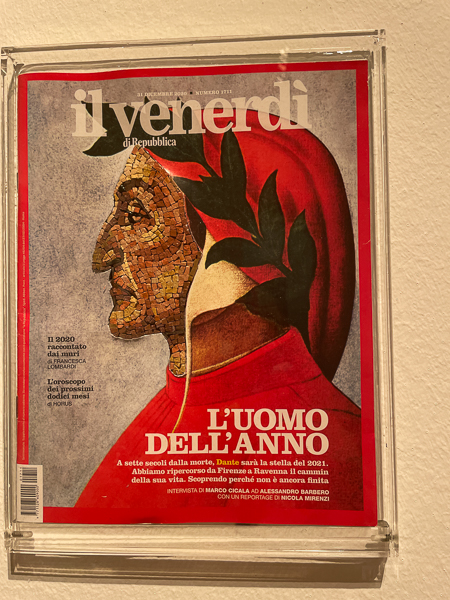November 2022
In 402 CE the reality of barbarian invasions compelled the Western Roman emperor Honorius to move his court from Rome to Ravenna.
In 438 the city was raised to the status of an archbishopric. With the fall of the Western Empire in 476, it became the capital of the first barbarian ruler of Italy, Odoacer (reigned 476–493), who in turn surrendered it to the Ostrogothic king Theuderic (reigned 493–526) in 493. Theuderic made Ravenna the capital of the Ostrogothic kingdom, but in 540 Ravenna was occupied by the great Byzantine general Belisarius.
Are you exhausted yet?
Bringing you up to more modern times: In 1441 Venice established direct rule over Ravenna, but in 1509 the city was returned to the Papal States. In 1512, following the Battle of Ravenna, the city was seized by the French but was soon recaptured. In 1859 Ravenna proclaimed its union with the kingdom of Sardinia, which became the kingdom of Italy in 1861.
Piazza del Popolo dates to the second half of the 13th century, a period when the Da Polenta family controlled the city.
Following the example of Piazza San Marco, in Venice two columns were placed in the square, the lion of Saint Mark, and a statue of the patron Saint Apollinaris.
In 1509, when Pope Julius II took possession of the city after the defeat of the Venetians at Ghiaia d’Adda, the insignia of the Serenissima was removed from the square. The lion on the column was replaced by the patron saint, and the statue of San Vitale was added.
The square, at first called Piazza del Comune and then Piazza Maggiore, was named after Vittorio Emanuele II after the proclamation of the Kingdom of Italy.
The current name of the square dates back to the institutional referendum of 1946 when over 88% of the people of Ravenna voted in favor of the republic.
Today Ravenna is an agricultural and industrial city. With its population of 160,000, it is a quiet, mid-sized city and the capital of Italy’s northeastern Emilia-Romagna region. And, although it is an inland city, Ravenna is connected to the Adriatic Sea by the Candiano Canal.
Tourists are drawn to its well-preserved late Roman and Byzantine architecture, with eight buildings comprising the UNESCO World Heritage Site “Early Christian Monuments of Ravenna” and their mosaics.
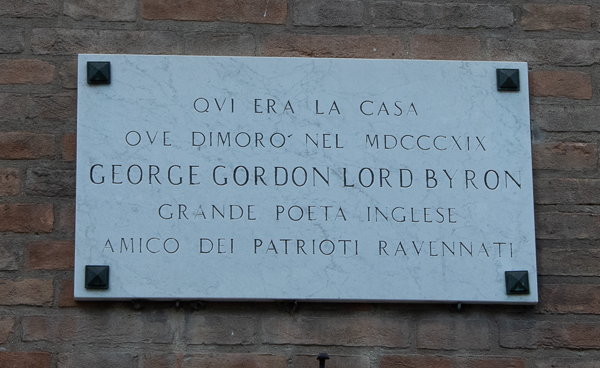
Lord Byron lived in Ravenna between 1819 and 1821, driven to do so by his love for a local aristocratic and married young woman, Teresa Guiccioli. Here he continued Don Juan and wrote Ravenna Diary, My Dictionary, and Recollections.
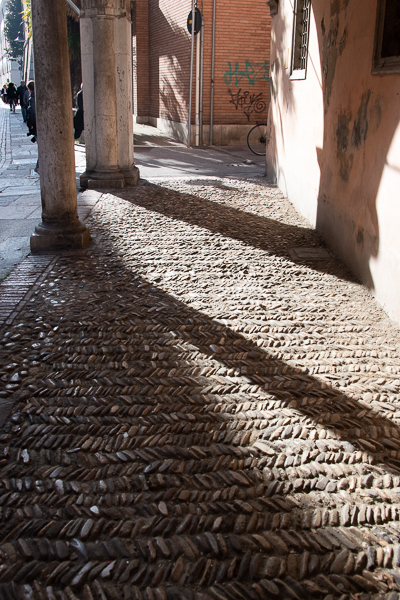
Creating images from small pebbles to ornament the floors of buildings was a technique developed in ancient Greece, which the Romans turned into a technical tour-de-force at Ravenna.
The city of Ravenna sits on a relatively soft marshland which has led to a number of structural issues among its buildings and apparently the entire city is slowly sinking. The crypt of San Francesco is now constantly filled with a foot or so of standing water. Since fighting the creeping flood has proved fruitless, the pool is now home to goldfish (and occasionally ducks) which swim among the columns and over the sunken mosaics.
As I mentioned the mosaics are why people come to Ravenna. Their vastness is covered in two other posts. Here and Here.
Guidarello Guidarelli after an exceptional military career in the service of Cesare Borgia, took part in the siege and attacks on the city of Faenza in the winter of 1500 – 1501 where he was mortally wounded.
Guidarelli was carried to the house of Penserio Sassatelli where he managed to dictate his will and organize his funeral. His remains were to be buried in the church of San Francesco in Ravenna. As part of his testament, he ordered that 600 ducats be set aside for sculptural works on his tomb, although it took more than 25 years for this wish to be carried out. In 1827 his descendants had his tomb removed from the garden outside of the church of San Francesco to the new Ravenna Art Museum, where it now resides.
The sculpture of Guidarello Guidarelli by Tullio Lombardo became more famous than he may have imagined. According to legend any woman who kissed the statue would be married the same year, while any spouse would eventually have a child as beautiful as the Guidarelli.
In 2004 the statue was cleaned of what must have been layers and layers of lipstick and put behind glass. When I visited it was no longer behind glass, but a guard stood by, I am sure, to make sure I did not lean down and kiss the dear knight.
